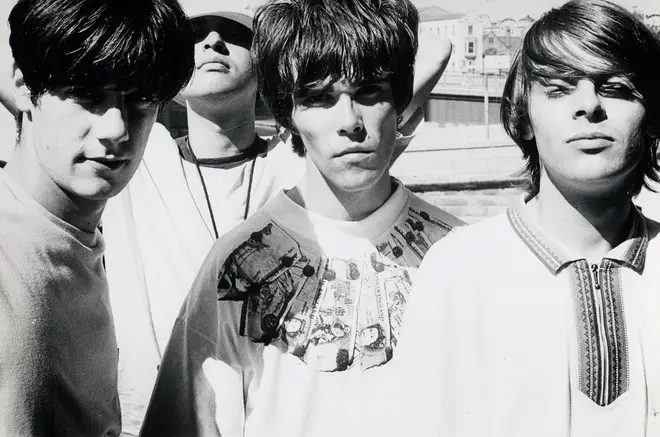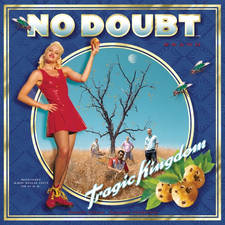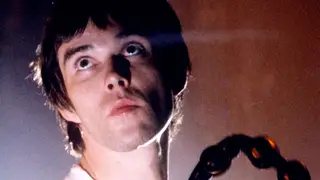The inspirations behind The Stone Roses’ I Am The Resurrection
13 April 2020, 18:45 | Updated: 29 April 2020, 14:09

I Am the Resurrection (Remastered)
Let's take a look at why the epic album track is one of the Manchester legends' most-loved anthems.
I Am The Resurrection was the final song on The Stone Roses' 1989 self-titled debut album, but it was definitely a case of last but not least. In many ways, this track and Happy Mondays’ Wrote For Luck (released in October 1988) kick-started the baggy shuffle of Madchester.
With its original version an clocking in at over 08:12, this eclectic track is a firm fan-favourite and induces mass sing-a-longs whenever it's played.
But what makes the album track so special? And what do its lyrics mean?
I am the resurrection and I am the life
I couldn't ever bring myself to hate you as I'd like

The Stone Roses - I Am The Resurrection (Live in Blackpool)
According to reports, The Beatles have quite a bit to do with the song's epic sound, with Alan "Reni" Wren revealing the track came about as a result of a "joke" when Gary "Mani" Mounfield played Paul McCartney’s Taxman riff backwards.
As Clash Music reports, the drummer said: “Mani would play the riff backwards during sound-checks and we played along over the top for a laugh. Finally we said, Let’s do this joke-song properly and see what happens.'”
Despite Reni's admission about taking inspiration from the 1966 Revolver track, it's not something a young Ian Brown would have admitted freely.
After all, in his now infamous early interview with guitarist John Squire, when asked what comments hurt him most about the band, he replied: "That we're influenced by the '60s".

Ian Brown -John Squire interview (1 of 2) HD
To make a song truly epic, you need some truly inspiring lyrics- and though its verses are pretty straightforward, they serve their purpose in building towards the song's massive refrain, which sees Ian Brown declare: "I am the resurrection and I am the life".
Now when it comes to messianic imagery, it doesn't get more blatant than that, does it?
The line is a direct quote from the Bible, The Gospel According To St John, in fact - and a major event in the life of Jesus Christ. In John Chapter 11, Jesus goes to see the sister of his friend Lazarus, who had died four days earlier.
Jesus tells Martha that her brother will “rise again”, adding: “I am the resurrection and the life. He who believes in Me, though he may die, he shall live. 26 And whoever lives and believes in Me shall never die. Do you believe this?”
The resurrection of Lazarus is one of the key moments in the New Testament, where Christ offers proof of his Divinity.

And of course it makes for a pretty decent point to stand up with your arms outstretched on the terraces.
Let's not forget the track's awesome ending, or rather its second half...
The famous outro, which lasts four minutes and sees Mani, Reni and Squires close their landmark debut album is just as beloved as the rest of the song.
Speaking to NME about the instrumental, Mani revealed: "The end section was recorded in one take by me, John and Reni."
The Fools Gold bassist, who referred to it as "a great song followed by one of the best pay-offs of all time," added: "Simply stunning."
The earliest surviving recording of I Am The Resurrection hails from 30 May 1988, a year before the album came out. The Stone Roses appeared on a bill with fellow Mancunians James, who were performing a benefit at Manchester’s International venue to protest against Clause 28 - the Government’s law banning “promotion” of homosexuality in schools.
The version of I Am The Resurrection from that night is undoubtedly ropey, with none of the band agreeing on what key the track should be in, plus the song is missing its lengthy closing jam at this point.

Stone Roses - Iam The Resurrection - Live Anti Clause 28 Gig, 30th May 1988
However, the show was historic as it was one of the dates that put the Roses on the map. Plus, both Noel and Liam Gallagher were present that evening - Noel met Inspiral Carpets guitarist Graham Lambert that night, which led to him gaining a job as that band’s roadie, while Liam, claimed that seeing Ian Brown perform changed his life: “If I hadn’t gone that night, I’d probably be still sitting in some pub in Levenshulme.”
Mani’s iconic riff during the final jam impressed fellow Mancunians 808 State, who used the moment in their 1990 collaboration with rapper MC Tunes, Tunes Splits The Atom. Watch them perform it on The Word - can this get any more 90s?

MC Tunes vs 808 State - Tune splits the atom THE WORD 1990







